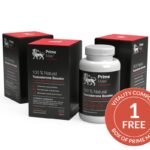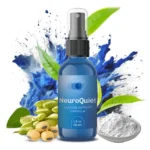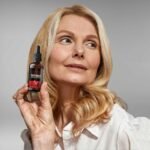Health headlines today are always focused on the topics of antioxidants. You can not pick foods at the store without seeing the antioxidant hype. Every day we are being attacked by millions of pollutants and toxins. Our bodies are working overtime to breakdown and remove the toxic invaders of our health systems.
The fear that just one of these free radicals might cause problems has to lead us to a level of health food insecurity never before seen. The war against this toxic mass can oftentimes be confusing and is associated with some terms that are often misused and more often misunderstood. Let’s learn those terms first and then we all can work on the same playing field.
Antioxidant 101

Class Is Now In Session
Our bodies have millions of chemical reactions that occur every hour. All of these chemical reactions produce heat and if we produce enough chemical reactions, we get so hot that we can actually sweat. The control of these chemical reactions is based upon several factors, such as heat, concentrations and polar attraction.
The polar attraction is similar to a magnet. The stronger a charge is on any particular chemical or molecule determines how likely it is to react with another chemical. Some chemicals help control the speed of reactions and specifically those are known as buffers. In short, antioxidants are actually powerful buffers to the unwanted various chemical reactions that occur in the human body.
Definitions That You Need To Know:
Free Radical:
Any chemical that has a un-natural charge on it. The abnormal charge makes the chemical reaction when it isn’t supposed to in your body. Large concentrations of free radicals inside the body can lead to cancer. The removal of the free radical is done by an antioxidant.
Antioxidant:
This is any chemical that can offer or take an extra electron from any free radical. The more stable the chemical is after reducing a free radical relates to how powerful of an antioxidant is. The stronger antioxidants also have to do with their strength on exchanging electrons with the free radicals.
Some powerful antioxidants like Vitamin E, are large molecules and can break down several free radicals and also be recharged to provide this ability again and again.
Vitamin E:
This is the most abundant fat-soluble antioxidant known to man. Vitamin E has a long chain of reactions per chemical, which means that a single vitamin can react several times to neutralize free radicals and still remain stable.

Diagram Of Vitamin E.
Vitamin C:
This is the most abundant water-soluble antioxidant known to man. This chemical works in the cellular fluids of the body. It has special characteristics that allow it to fight pollution, excessive sunlight, cigarette smoke, and other toxic invaders.
Vitamin C also has the amazing ability to restore Vitamin E to its active state after it has reduced a free radical.
 Diagram Of Vitamin C.
Diagram Of Vitamin C.Facts About antioxidants:
- The effects of long-term use and high concentrations of antioxidants have not been proven scientifically.
- Using natural sources for your antioxidants is better than taking a pill.
- Your body will absorb the natural vitamin much faster and more complete than the pill.
- Eating foods in their most raw and natural state is the best way to retain the maxim absorption of antioxidants.
- Water is necessary to allow the antioxidants the ability to work.
Nature’s Color Wheel:
Here is a breakdown of nature’s color wheel and the benefits that each color might provide, according to the National Cancer Institute and the Produce for Better Health Foundation:
Reds:
Tomatoes, raspberries, red bell peppers, red grapes, beets, and pomegranates are packed with antioxidants that may help fight cancer and protect memory.
Oranges / Yellows:
Cantaloupes, carrots, mangoes, sweet potatoes, and winter squashes contain the much-touted beta carotenes that enhance the immune system. Many also contain components that can lower the risk of heart attacks.
Greens:
Spinach, green grapes, asparagus, artichokes, broccoli and Brussels sprouts packed with lutein might play a critical role in maintaining eye health. Green fruits and vegetables also might reduce the risk of some types of cancers.
Blues / Purples:
Blueberries, blackberries, raisins, eggplants, and plums
Even with all these colors, coffee tops the list as the most powerful antioxidant food, followed by chocolate and then green tea. The interesting thing here is that the coffee bean and cocoa beans are naturally green and full of rich antioxidant power.






Leave a Reply